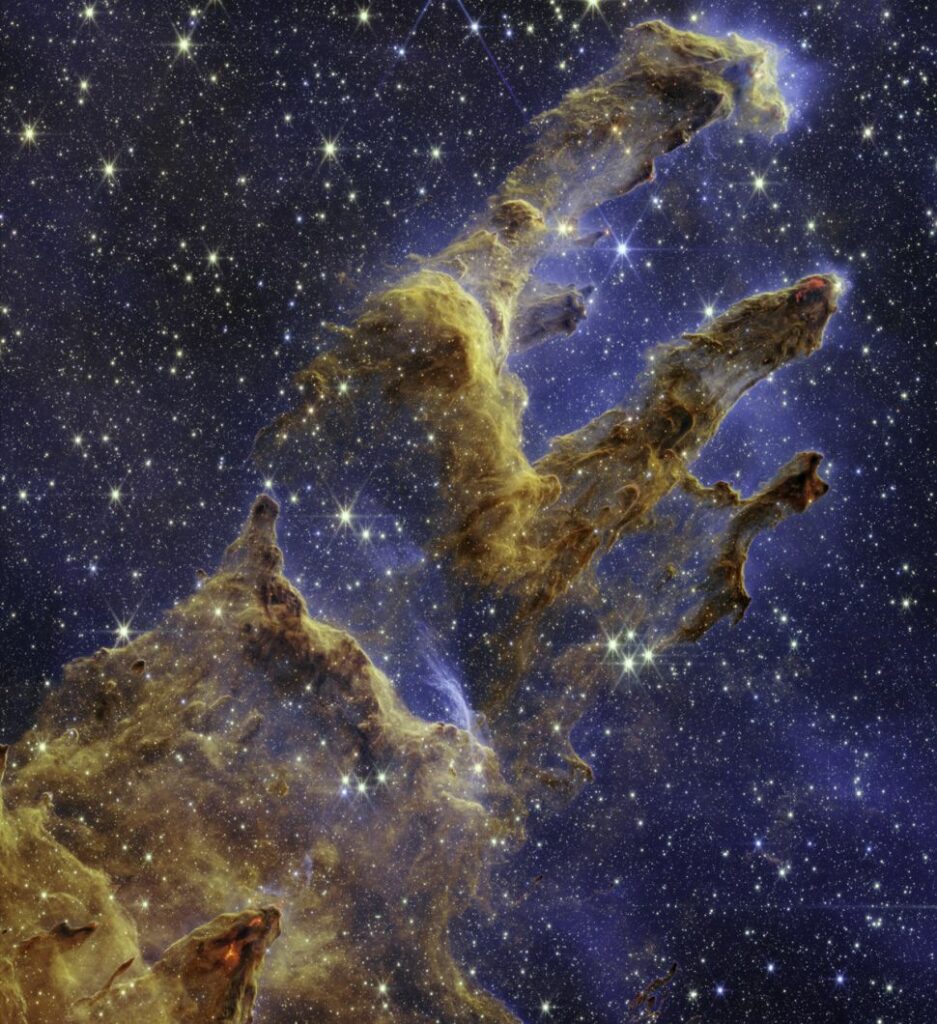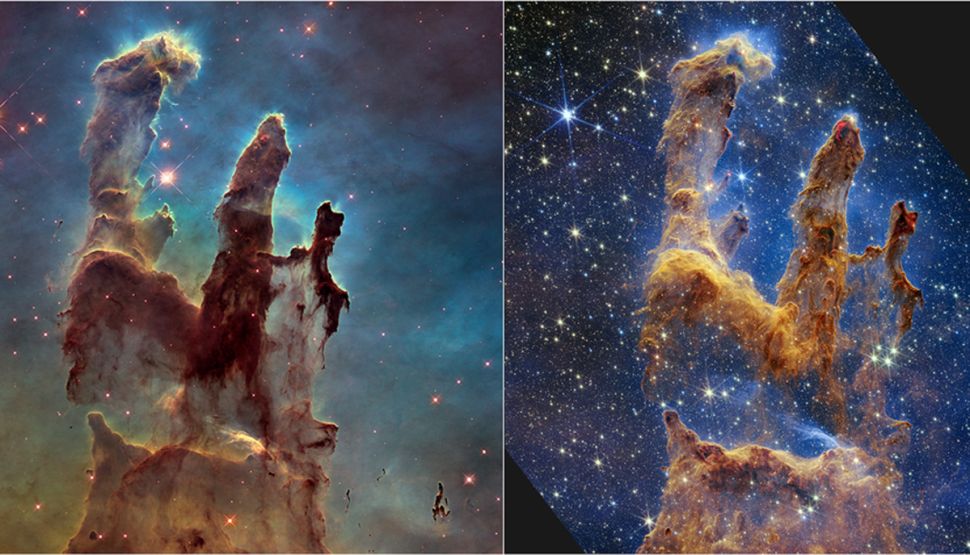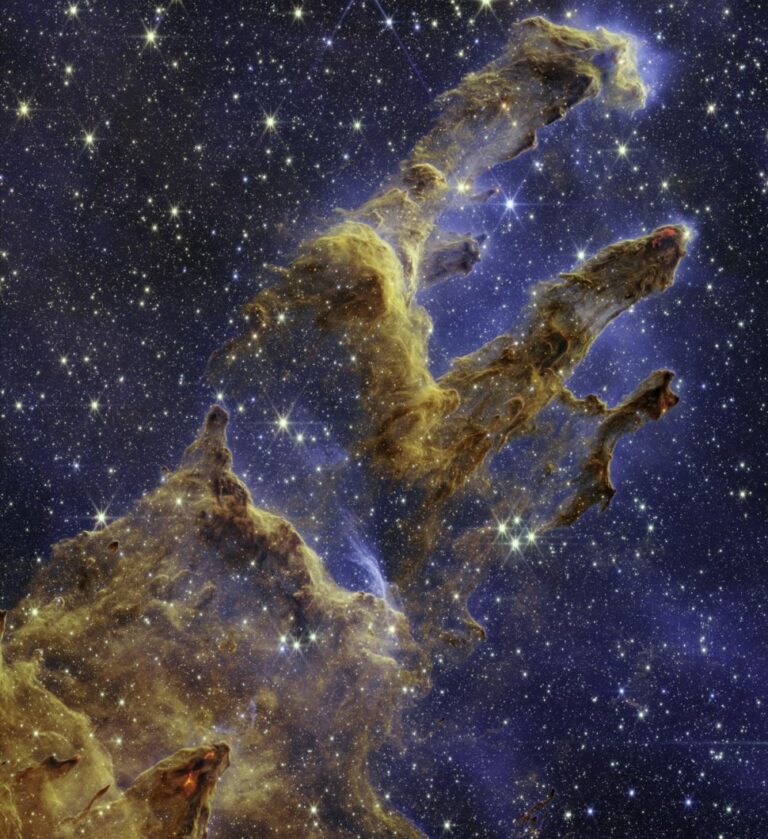James Webb Space Telescope’s Pillars of Creation image explained
The James Webb Space Telescope’s stunning view of the Pillars of Creation in the Eagle Nebula is described by the Webb team.
The “creation” has been revealed in stunning detail.
Initially made famous by the Hubble Space Telescope, the iconic Pillars of Creation are now being brought to life by the brand-new James Webb Space Telescope, which has shown hundreds of freshly formed stars glistening inside the well-known dust clouds.
The majestic Pillars of Creation are column-shaped clouds of interstellar dust and gas that are located in the constellation Serpens, around 7,000 light-years distant. They are a component of the Eagle Nebula. Astronomers were astounded by their imposing beauty in the first photograph of them, which was captured in 1995 by the Hubble Space Telescope, the forerunner of the James Webb Space Telescope.
The newly discovered image, taken by Webb’s Near-Infrared Camera (NIRCam), shows the pillars in considerably better detail, with hundreds of previously undetectable stars sparkling all over the picture and the fine cloud patterns revealing with clarity. According to a statement from NASA, many of these stars were formed only a few hundred thousand years ago.

Webb can see past the clouds and observe protostars bursting into life from the gathering dust because it has the capacity to detect infrared light, which is essentially heat. Webb’s observations of the nebula greatly outperform those of Hubble, whose considerably less powerful infrared detectors were used. In addition to offering a new degree of clarity and detail, Webb’s observations also reveal many more stars across the surrounding cosmos and inside the clouds.
According to a statement from NASA, Webb’s observations will “assist researchers overhaul their models of star formation by finding significantly more exact counts of freshly created stars, as well as the amounts of gas and dust in the area.” They will gradually get a better grasp of how stars grow in these dusty clouds over millions of years and then explode out of them.
Webb’s Pillars are softer, more finely organized, with vivid red “lava flows” surrounding the margins of some of the clouds, in contrast to Hubble’s Pillars, which are black and menacingly rising against a foggy background of a relatively empty cosmos. The European Space Agency (ESA), which collaborates with NASA on the James Webb Space Telescope project, stated in a statement that these “lava flows” are really material expelled by the developing stars.

Young stars occasionally release supersonic jets that clash with material clouds to form massive pillars like this, according to the ESA. “In certain cases, this also leads to bow shocks, which can create wavy patterns similar to what a boat makes when it travels across water. The vibrant hydrogen molecules produced by jets and shocks are what give off the color.”
The Milky Way galaxy includes the Eagle Nebula. In contrast to the dense band of our galaxy, which blocks the view of the more distant cosmos, Webb can make out the Pillars.
Do not forget to share your opinion with us to provide you with the best posts !




0 Comments